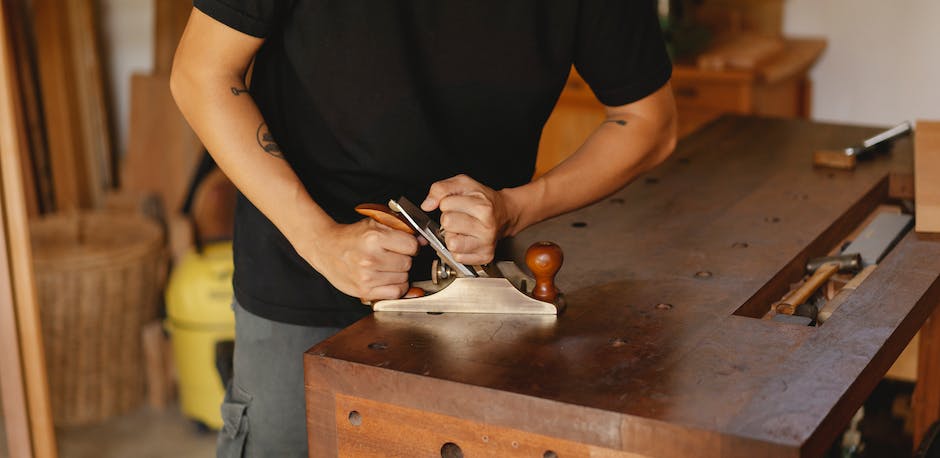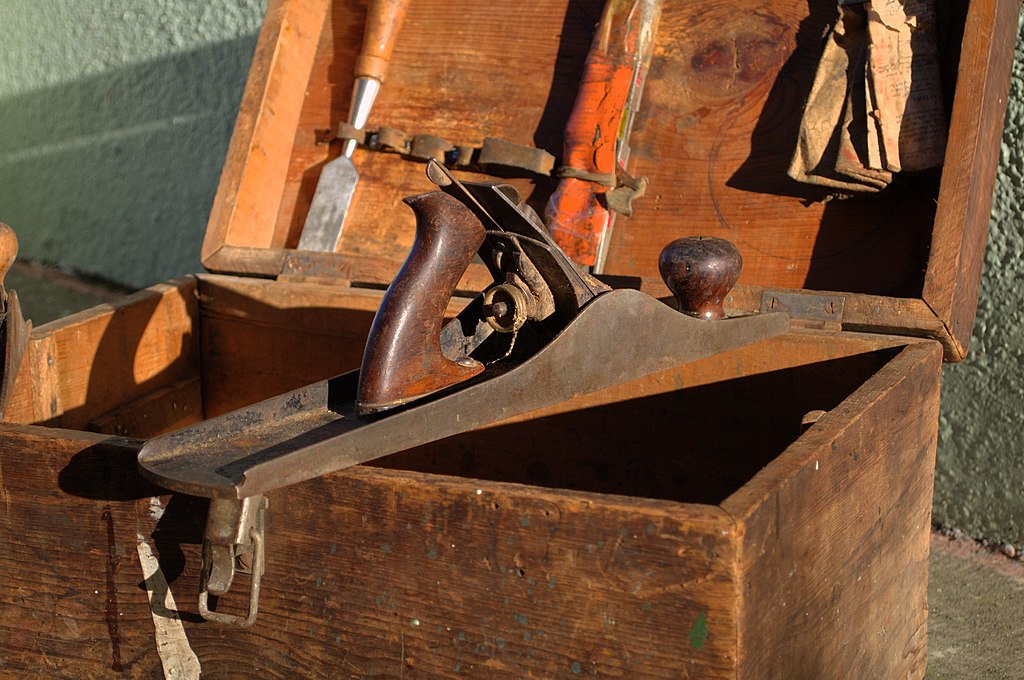A hand wood planer is an indispensable tool in the world of woodworking, allowing enthusiasts and hobbyists to shape, smooth, and straighten various types of wood with unprecedented precision.
The journey to mastery, however, involves a deep understanding of the different types of hand wood planers, each with their unique features and suited tasks.
In addition, achieving the perfect finish rests on the know-how to properly set up and operate the tool, adjusting crucial elements such as the cutting depth.
Equally significant is the awareness and implementation of safety procedures, not to mention the importance of routine maintenance in stewarding the planer’s longevity and performance.
This quest for knowledge drives us to delve into these topics, providing an easy-to-follow guide that cultivates competence and confidence in using hand wood planers.
Understanding Different Types of Wood Planers
Woodworking aficionados, rejoice! Here’s a fantastic deep-dive into the dynamic world of wood planers. Oh, the thrill of turning an ordinary block of wood into a work of art, one shaving at a time, is nothing short of pure joy.
With the right knowledge, the humble planer can transform your woodworking game as it lets you control the exact thickness and flatness of your workpiece. It’s a game-changer!
There are three primary types of wood planers: handheld planers, thickness planers, and jointer planers.
Each of these planers has a specialized function, designed either for the job site or workshop. Understand their different uses to bring the zenith level of finesse to your woodworking projects!
First up, handheld planers.
Portable and relatively easy to maneuver, these little workhorses have plenty to offer both beginners and seasoned pros.
Great for cleaning up edges, removing twists or bends, or making rough lumber smoother, handhelds offer unrivaled convenience.
Their small cutter heads and easily adjustable depth mean you can take off as much or as little as you want.
Use these for tasks like fitting doors, window frames, or smaller smoothing projects. A handheld planer provides the perfect introduction to the planer family.
Next, we have the diligent thickness planers.
These table-top tools are perfect for setting precise thickness across the length or width of a board.
The thickness planer consists of a flat surface with a spinning cutter head that rasps off any extra wood and a roller system that pulls the lumber through at a consistent speed to ensure an even cut.
These beasts are perfect for preparing lumber for furniture making or other bigger projects that require uniform thickness and flatness. It’s a must-have in almost every woodworker’s shop.
The final category is the jointer planers
, widely held as the holy grail of woodworking planers. This versatile piece of equipment is a combination of a jointer and a thickness planer, hence the name.
On one side, it acts as the jointer that flattens and squares up the edges; flip it over, and it behaves as a thickness planer for setting precise thickness and smoothness.
This is a serious tool for serious woodworkers. Despite being a tad expensive, its multi-functionality and consistency make it a worthy investment.
Remember, woodworking is not just about brute strength and sweat; it’s more about skill, precision, and most importantly, using the right tools.
The right planer, whether handheld, thickness, or jointer, plays a pivotal role in shaping, sizing, and perfecting a piece of raw timber.
You may find yourself working with all three types throughout a project. Happy planing, fellow lumber lovers! End your day with a handful of wood shavings and a heart full of satisfaction.

Correct Setup and Operation of a Hand Wood Planer
The Art of Using a Hand Wood Planer
In the symphony that is woodworking, there’s nothing quite like the timeless rhythm of a hand wood planer running along the grain of a piece of timber.
This beautiful tool, with its proud heritage and practical versatility, can often be overlooked in the modern workshop.
Despite this, the skilled application of a hand wood planer can be the difference between solid woodworking and truly masterful craftsmanship.
Preparation is Paramount
Before the planer can even touch the surface of the wood, getting the right set up is vital. Begin by securing your timber piece using bench dogs or clamps.
Ensure the wood is solidly held and won’t move while planing. The last thing required is a wobbly piece causing unexpected results, or worse, causing an accident.
Adjusting the Plane
Once the timber is secured, it’s time to adjust the planer. Starting by setting the cutting depth, take care not to go too deep too quickly.
Adjust the depth so that a sliver of the blade peeks out from the sole of the tool, no bigger than a sheet of paper’s thickness.
This prevents causing deep gouges in your wood that would be unnecessarily hard to smoothen out later.
Gripping the Planer
The traditional way to hold a hand wood planer is to rest the hand not holding the knob on the front of the tool, with the thumb running along one side of the plane and the fingers resting along the other.
It gives you control over the tool’s position and balance, which is particularly crucial when you are making the initial contact with the wood.
Planing the Wood
Hold the planer at a slight angle to the direction you’re planing. This allows the blade to cut the wood at a shear, which is typically easier than trying to cut straight into it.
Apply more pressure on the forward stroke and lessen it during the backstroke, and always remember to keep the movement as smooth and consistent as possible.
Remember that technique is everything when it comes to using a hand wood planer. The primary goal is always producing a smooth, flat surface, and this is best achieved with control and consistency.
Start with gentle strokes until you feel comfortable, then slowly increase until you can remove more significant shavings.
Maintaining your Planer
Lastly, a planer is only as good as its upkeep. Remember to regularly clean your planer, check the blade for sharpness, and adjust the depth as needed.
Make a habit of wiping the sole with an oil-soaked cloth to reduce friction while planing.
In essence, a hand wood planer can command an unrivaled mastery over wood surfaces. It imparts nuances that breathes life into any woodworking creation — transforming rudimentary craftsmanship into a true work of art.
Remember, the hand planer isn’t just a tool; it’s a cherished ally in unveiling the hidden charm of every timber piece. So, take up this time-honored tool, and let your woodworking sing.

Safety Precautions and Maintenance
Following the introduction and salient descriptions of the various types of wood planers and their roles in woodworking, the conversation at hand now takes a more safety-centered path.
Our goal here is to ensure every woodworker harnesses their craft, while remaining safe and maintaining their tools effectively. First things first, preparation is key when it comes to using a hand wood planer.
Before donning the woodworking apron, ascertain that the workspace is clean, clutter-free, and well-lit.
Dimly lit spaces increase the risks of accidents and errors in planing. Proper respiratory protection should be used to defend against airborne sawdust and wood particles, and safety glasses are non-negotiable protective gear.
Moving on to the planer, take time to inspect it before use. The blades should be razor-sharp and firmly secured in place.
Blunt or loosely held blades can interfere with the quality of work and may even pose risks. To ensure the best outcomes, adjusting the planer for optimal results bears emphasis.
The depth of cut should be set with precision; too deep and the planer may jam or stall, too shallow and the planing process becomes ineffective and laborious.
Plying the wood planer like a true craftsman calls for proper gripping technique. The grip should be firm, but not strained, ideally allowing for flexibility, control, and balance.
Aim to have a grip that enhances your ability to guide the planer smoothly and consistently over the wood surface.
Practice makes perfect, and over time maintaining a proper grip becomes second nature.
Planing wood effectively isn’t just about having the right tool and gripping it right. It’s also about technique.
Remember, the plane should be pushed forward in smooth, even strokes. And always plane along the grain, never against it, to avoid potentially chipping the wood and harming the planer.
It is vitally important to ensure after every use, the hand wood planer is properly cleaned and stored.
Blades should be removed and wiped clean of any residual wood particles. A light coat of oil on the blades can help prevent rust.
Prior to storage, check that all screws or adjustment knobs are not loose to avoid any loss or unnecessary damage.
In summary, the joy of woodworking extends beyond shaping and crafting wood. It embodies cultivating a discipline in maintaining safety practices and regular maintenance routines.
These elements do not only ensure the longevity and efficacy of the hand wood planer but also uphold the integrity of the craftsman.
It’s undeniable: the beauty behind the finely crafted, smooth wooden surface is indeed a reflection of the meticulous effort and passion dedicated to achieving it, thanks to an indispensable ally – the hand wood planer.

Mastering the art of using a hand wood planer requires a combination of knowledge, skill, and maintenance.
By understanding the varied types of planers and their desired tasks, we open the door to the versatility of this tool.
Implementing the proper setup and operation techniques helps achieve clean and leveled woodworking results.
Meanwhile, adhering to the prescribed safety precautions safeguards us from any potential hazards.
Finally, a regular regimen of maintenance ensures that our hand wood planer remains in tip-top shape, ready for any woodworking challenge.
The art of woodworking, after all, is not just about creating masterpieces from raw materials—it’s also about mastering the tools that help us turn these visions into reality.


